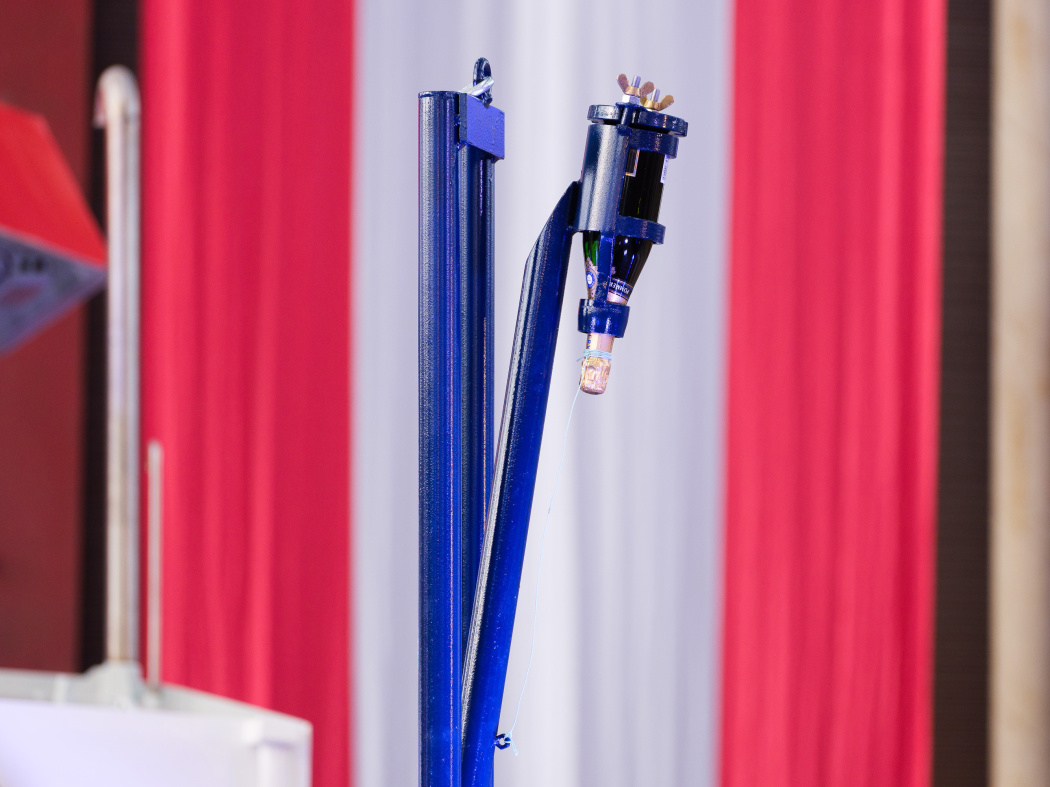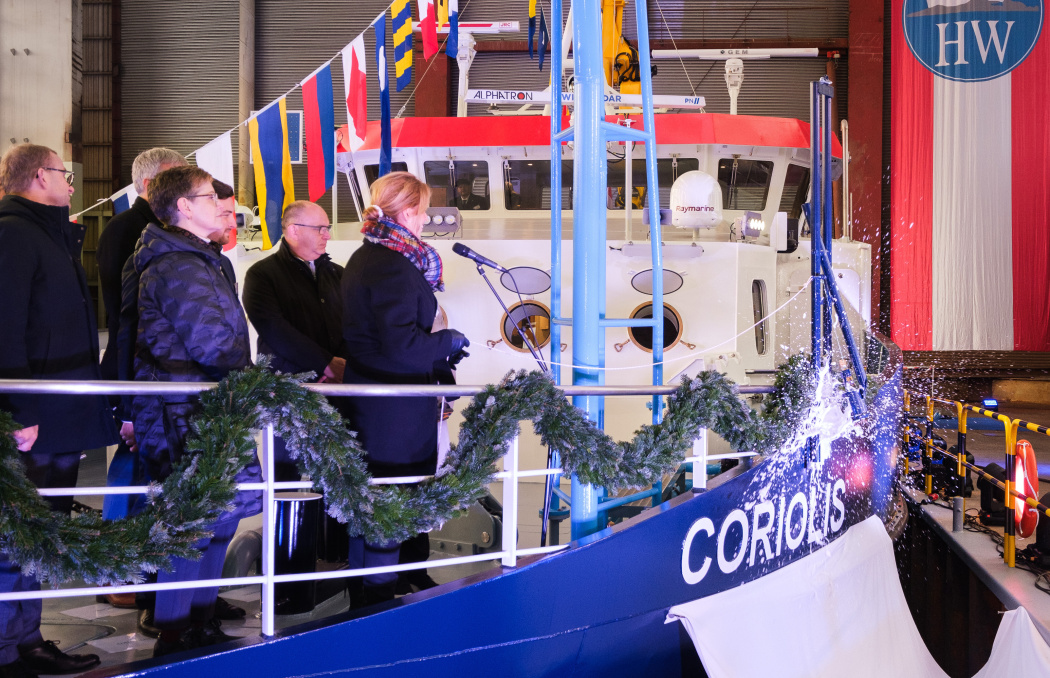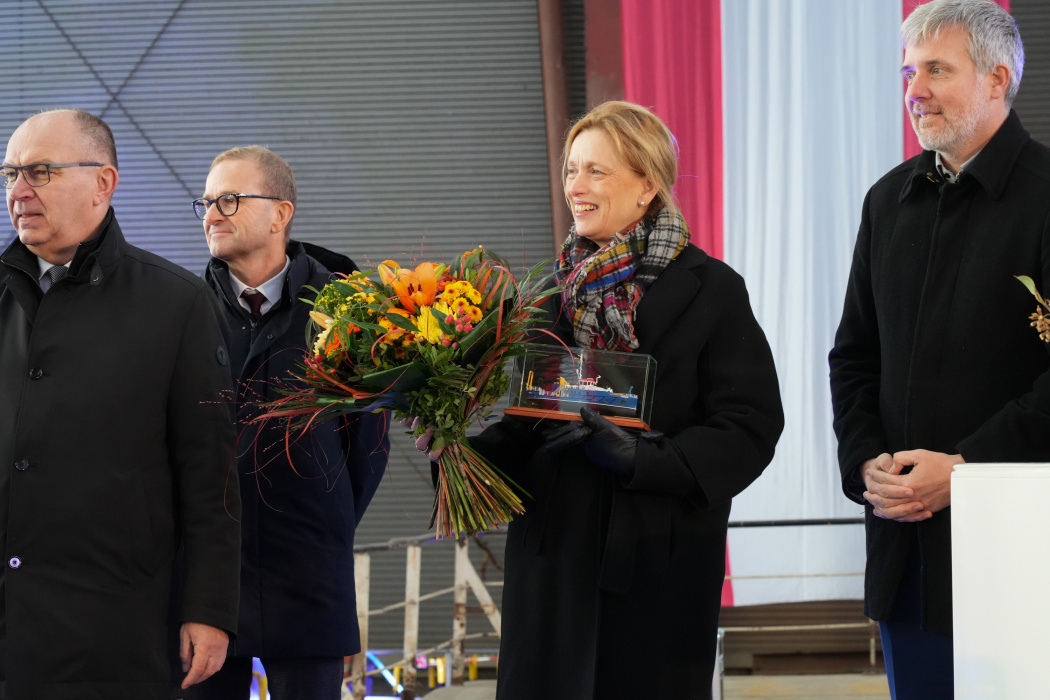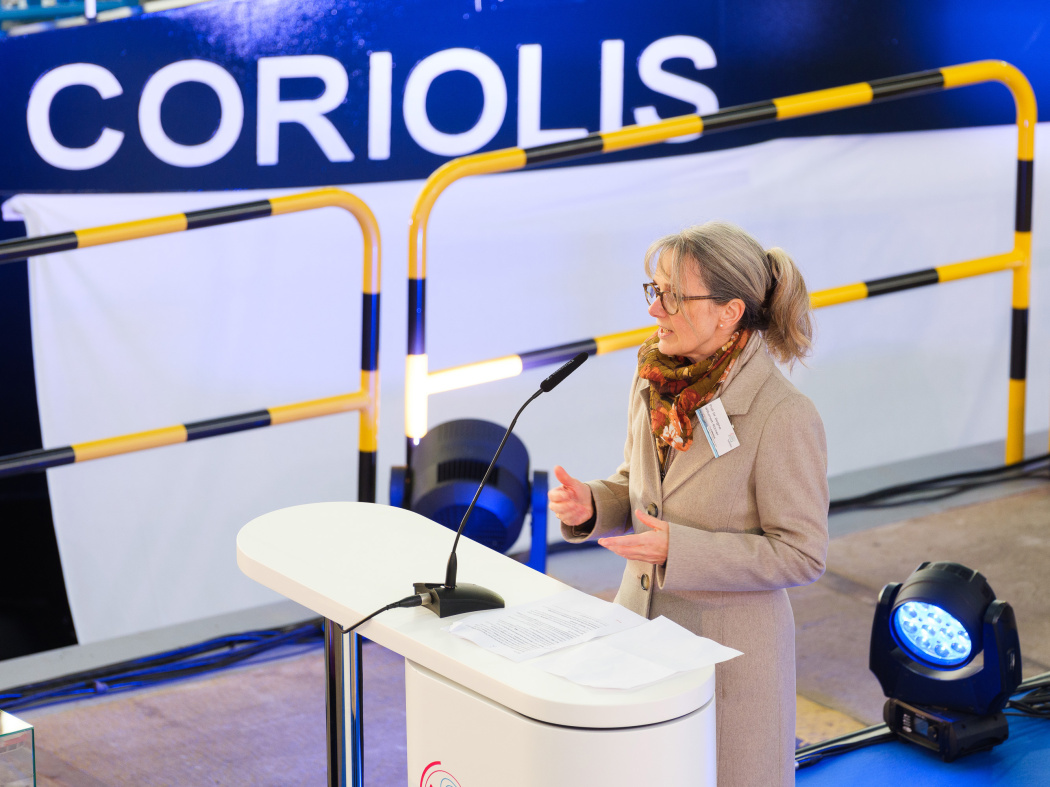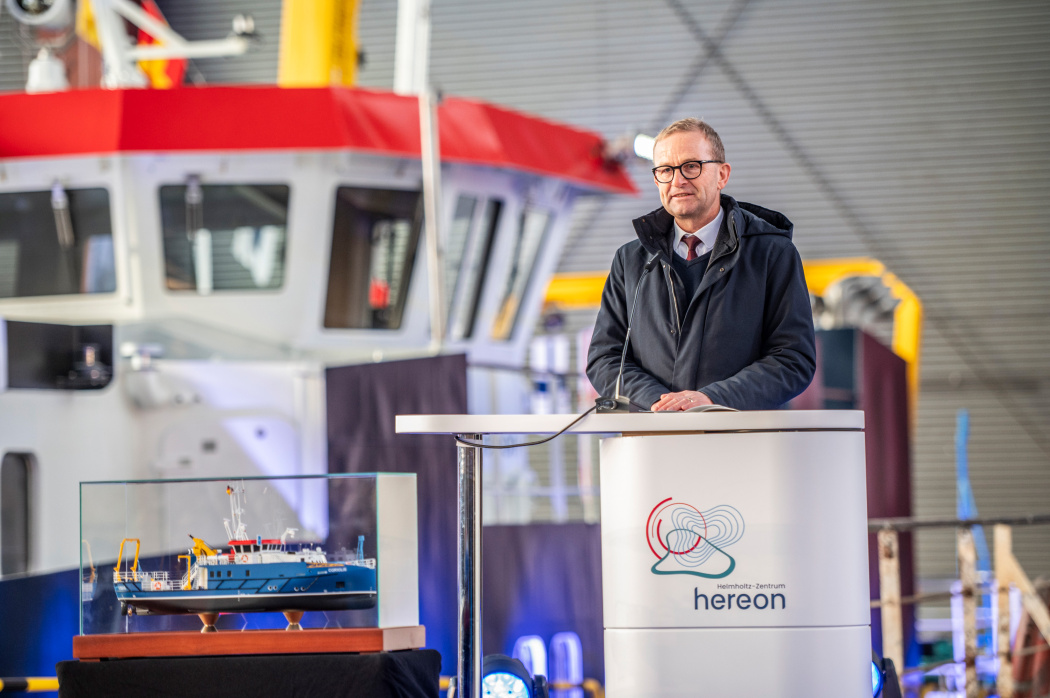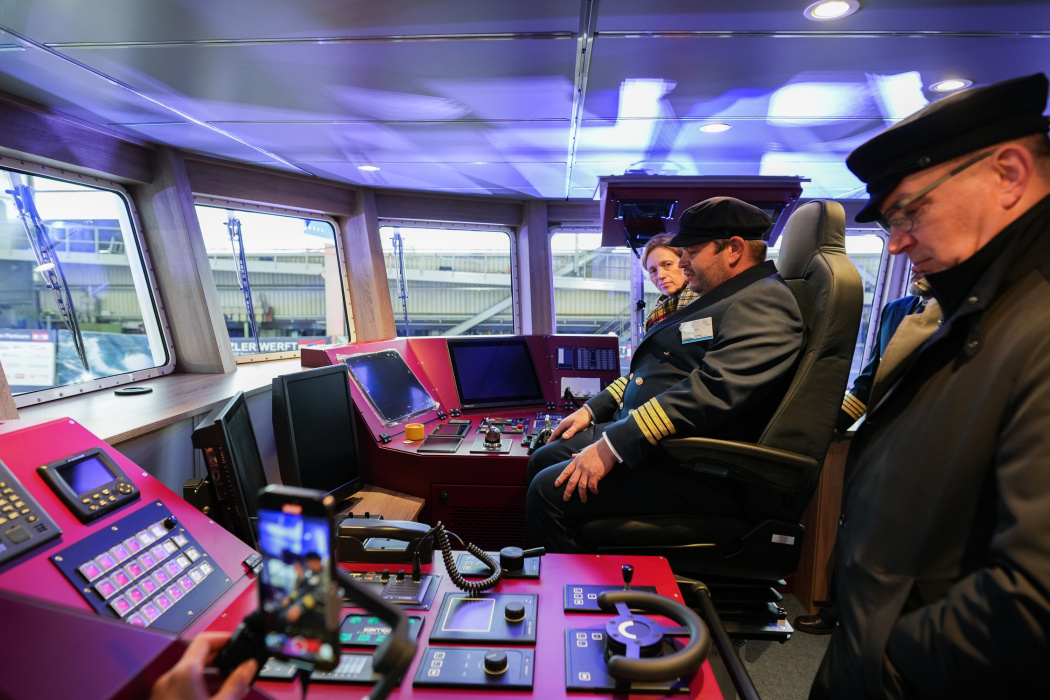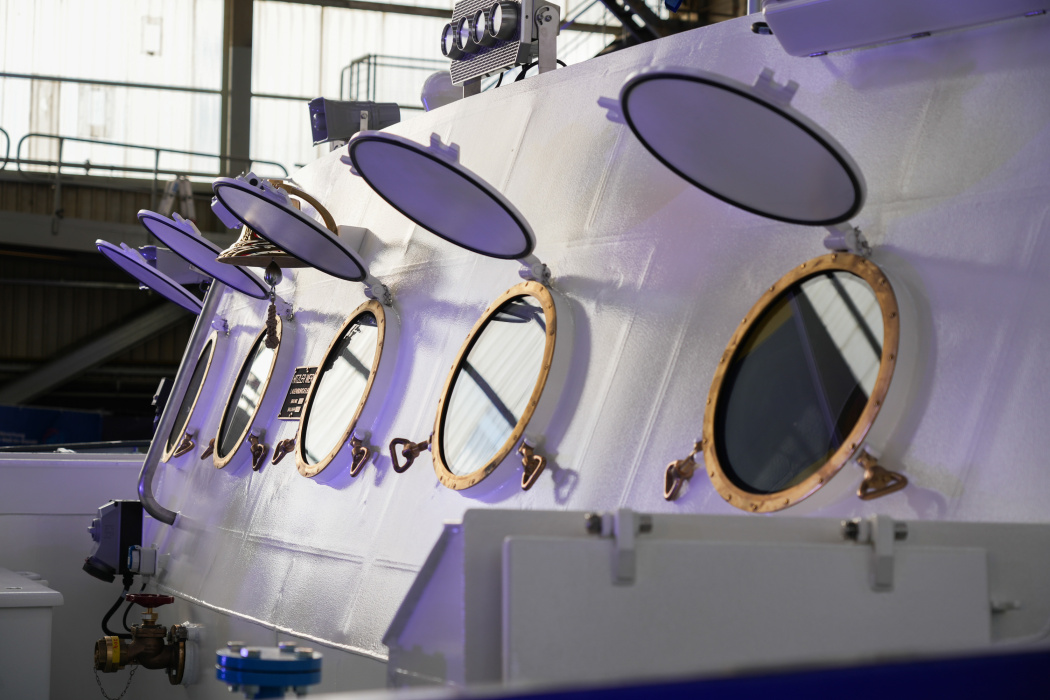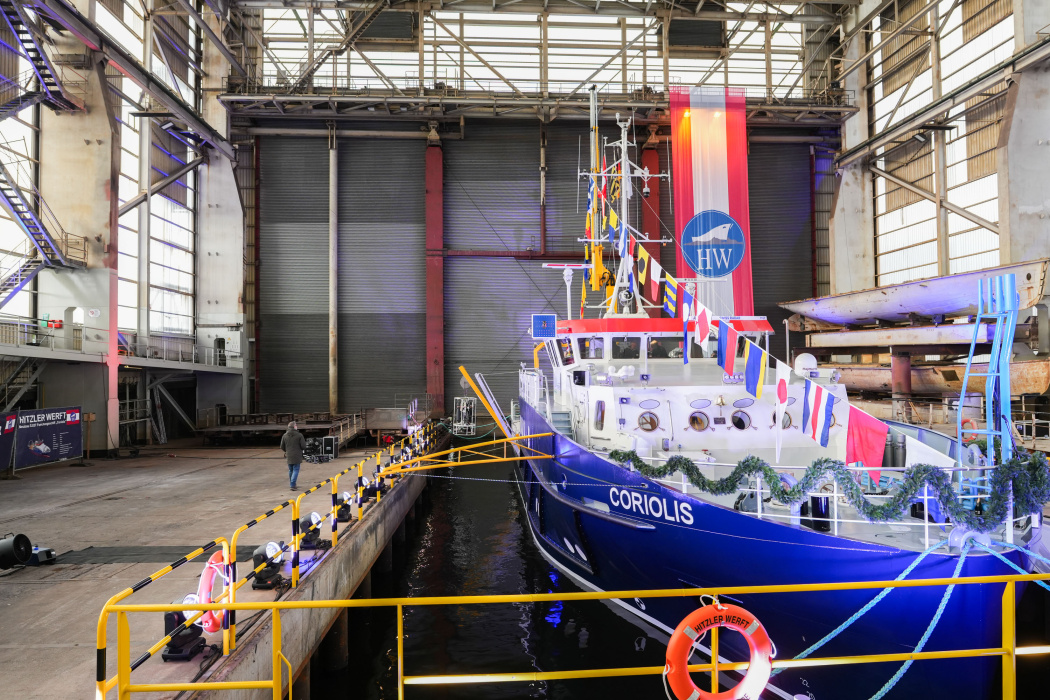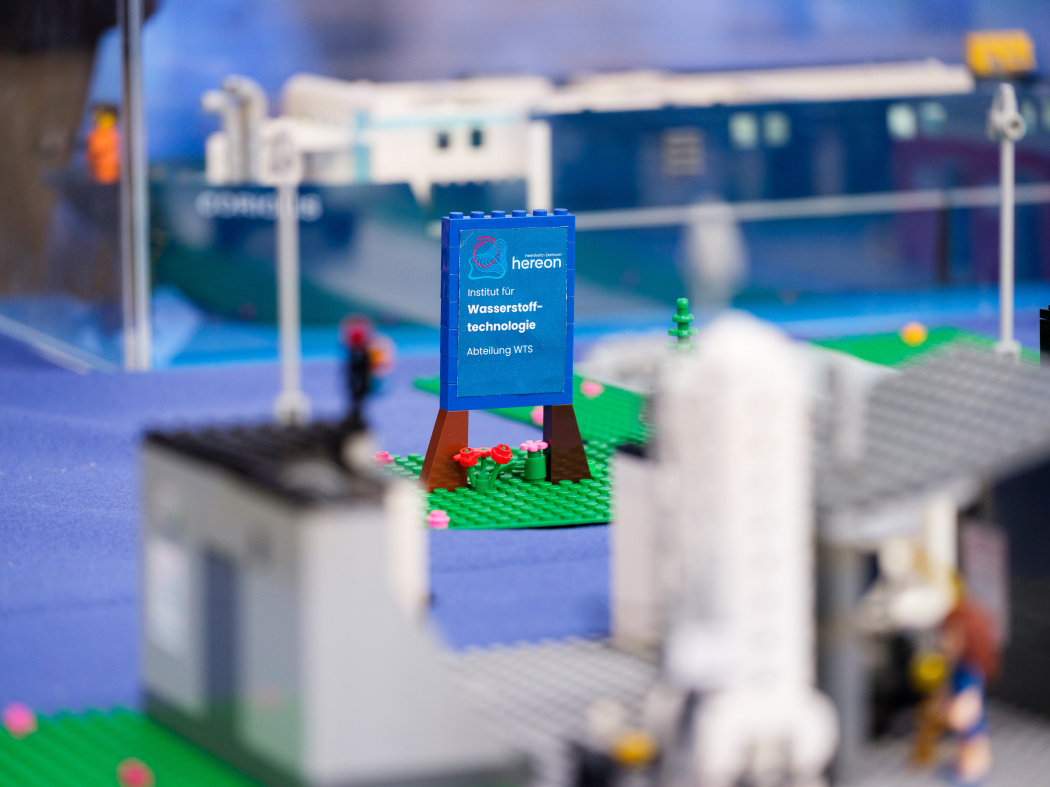Hereon names a very special ship
Accompanied by around 400 guests, the ship naming ceremony was led by Karin Prien, Schleswig-Holstein’s Minister of Science, who assumed the role of sponsor for this remarkable vessel. CORIOLIS is a floating, multi-purpose laboratory with state-of-the-art equipment designed for coastal, hydrogen, and membrane research. It also represents a step toward environmentally friendly maritime technology, which empowers environmental protection and climate sensitivity.
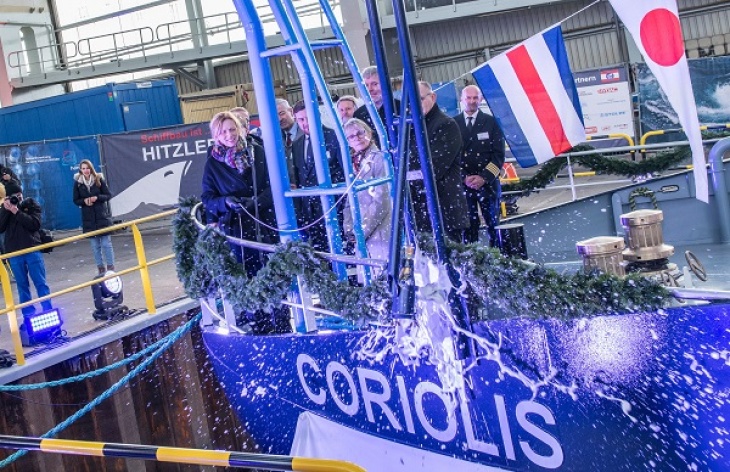
There was loud applause after the bottle hit the ship. Photo: Hereon/ Marcel Schwickerath
Applause broke out when the champagne bottle hit the bow of the CORIOLS and burst. The guests from politics, science and business celebrated the christening of a truly unique vessel. “As a coastal state, Schleswig-Holstein is directly affected by changes in the oceans caused by climate change, by pollution in the North Sea and Baltic Sea, by a possible rise in sea levels or by changes to the flora and fauna in the seas. At the same time, the country has enormous potential to become a pioneer in renewable energies and energy sources. However, intensive research efforts are still needed to successfully advance the energy transition and environmental, climate and coastal protection. The Helmholtz-Zentrum Hereon's new research vessel Coriolis makes this research possible - for example in the areas of propulsion technologies, hydrogen storage, analysis methods and digitalization. This opens new perspectives for our entire scientific community at universities and research institutions and is a gain for the state of Schleswig-Holstein,” said Karin Prien, Minister of Education, Science and Culture of Schleswig-Holstein.
“With the Coriolis, hightech shipping meets excellent coastal and climate research. At the same time, the ship stands out in terms of digitalization. It is a central component of the interdisciplinary collaboration at the center and thus fully in line with the new Hereon orientation,” said Dr Ralf Gebel, Chairman of the Hereon Supervisory Board and Head of the ‘Applied Research for Innovation’ subdepartment at the Federal Ministry of Education and Research (BMBF).
Representatives of Hereon were equally enthusiastic. “CORIOLIS will become our brand ambassador by researching complex systems, such as our coasts. It will do this in an interdisciplinary and solution-oriented way with the help of observations, experiments, AI and digital twins. It is not only fundamental for coastal research, but also a tool for our entire center, because hydrogen and membrane technology are also used on board,” said Prof Regine Willumeit-Römer, Scientific Director at Hereon.
Focus on the Coasts
The CORIOLIS plays a vital role in coastal and climate research. Among other tasks, it studies carbon cycles, nutrient and pollutant transport between rivers and coasts in the North and Baltic Seas, and the environmental impact of offshore wind energy. Data is collected in real time and will be made accessible for exchange with other vessels and landbased stations.
Coastal research is intensely focused on climate-relevant processes. The goal is to develop options to mitigate climate change and help coastal regions adapt to changes like rising sea levels and more intense storms.
Digital Twins of the North Seas, Baltic Seas and the ship
With its measurement data, CORIOLIS is contributing to the development of a digital twin of the North and Baltic Seas, among other things. Digital twins are interactive virtual images of highly complex processes, systems or real products that are continuously compared with data from the real world at Hereon. The data obtained at CORIOLIS is automatically fed into these twins and processed using appropriate modeling and AI-supported models. The models will help to better understand the effects of offshore applications, technologies and other environmental factors, for example. A digital twin of the CORIOLIS hydrogen system laboratory is also to be developed.
State-of-the-Art Laboratories and Innovations for Greener Shipping
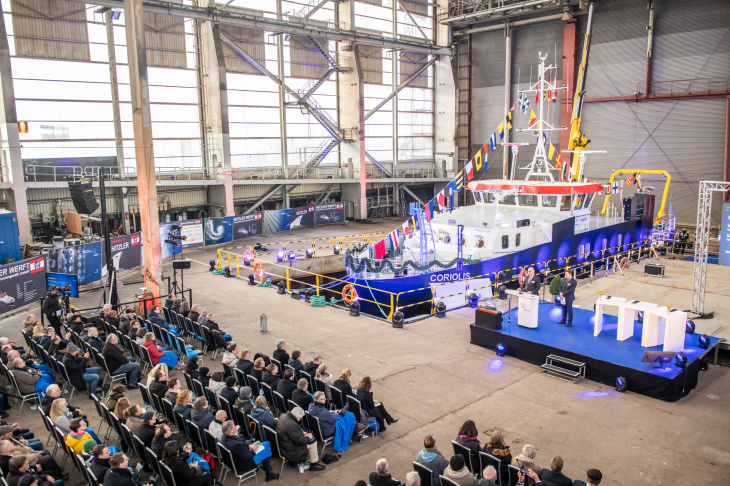
Over 400 guests came to the Hitzler shipyard for the christening ceremony. Photo: Hereon/ Marcel Schwickerath
The ship's innovative propulsion system is powered with electric motors driven by various power generators, including a hydrogen fuel cell. The hydrogen is stored in a metal hydride tank, which Hereon developed, allowing real-world testing of hydrogen technologies. Metal hydride is a chemical compound that absorbs hydrogen into metallic lattice structures, acting much like a sponge. This allows the tanks to be used at lower pressure and in a more compact format. In pure hydrogen mode, the CORIOLIS can operate for approximately five hours on a single tank charge. Additionally, it uses Hereon’s membrane technology, which, when combined with an onboard diesel generator for power generation in port, can reduce nitrogen oxide emissions by up to 80 percent.
The ship measures approximately 30 meters in length, 8 meters in width, and, with a draft of only 1.6 meters, is well-suited for sampling in shallow coastal waters. It accommodates 12 scientists and 3 crew members and is scheduled for 200 research days per year. The costs for the ship amount to 18 million Euros, within 1.5 million for the hydrogen system laboratory. The ship was mainly financed from federal funds. Trial runs will begin in early 2025, followed by the first research campaigns, both for Hereon staff and external partners.
Pride in the Outcome
Dr Jens Meywerk, Hereon project manager for the CORIOLIS, commented: "For me, it's the technical complexity within such a compact space that makes this project so fascinating. There is no comparable ship." Marek Klimenko, CEO of Hitzler Shipyard, emphasized the project's significance for his company. "A ship naming is always something special. It’s like a child that has suddenly grown up and becomes independent. This was an important commission for our shipyard and the region."
What does Coriolis Mean?
Gaspard-Gustave Coriolis (1792-1843) was a French engineer and mathematician who is best known for his work in mechanics and his discovery of the Coriolis effect. The Coriolis force is an apparent force caused by the earth's rotation and deflects movements of all kinds, including those of liquids or air masses. It significantly influences the currents in the atmosphere, the oceans and the distribution of energy and substances on earth, which is of great importance not only for marine research. The Coriolis force is also responsible, for example, for the direction of rotation around low-pressure areas; it therefore has a decisive influence on which coastal regions can be hit by a typhoon or hurricane, for example. This is a topic that is particularly important in times of serious climate change.
The name CORIOLIS reflects the fact that the ship also investigates the dynamics of ocean currents and atmospheric processes. It also makes it clear that - as with the Coriolis force - a single lever or the new research vessel can achieve great things.
Further Information
Contact
Science Editor
Communication and Media I Helmholtz-Zentrum Hereon
Phone: +49 (0)4152 87-1648

